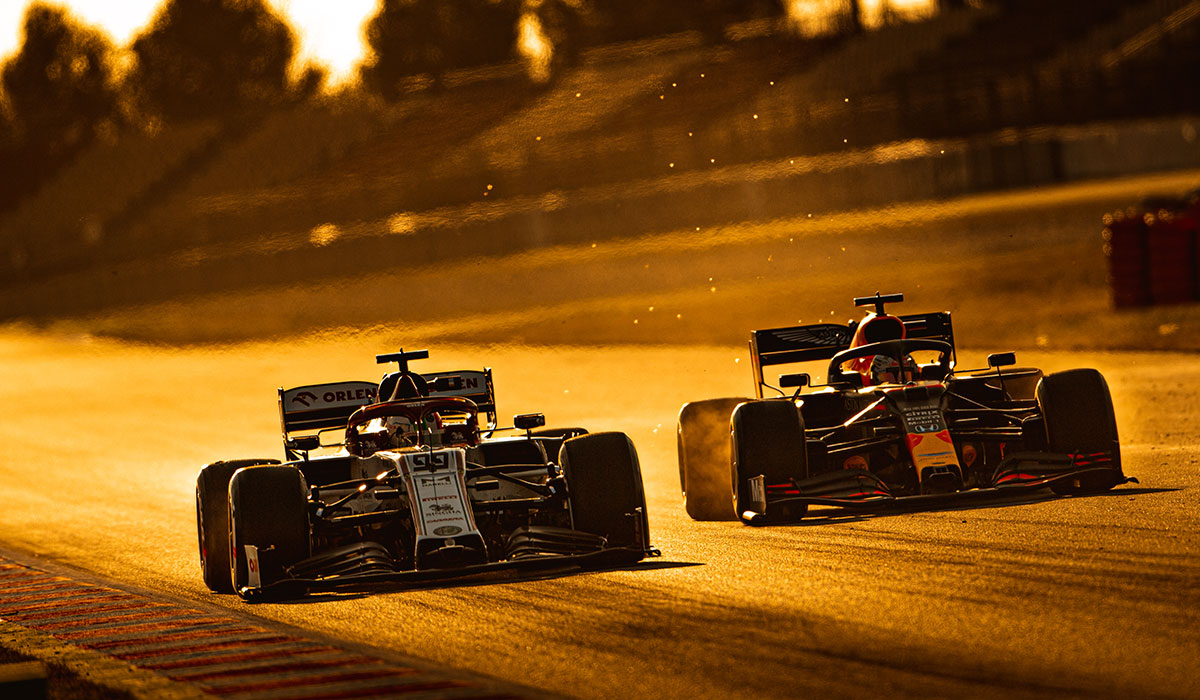Las Vegas is no stranger to entertainment, and it’s the perfect place to host an event like the Formula 1. The city has already played host to some of the biggest names in music and food, as well as the Las Vegas Raiders football team. And now, with the addition of the Las Vegas Grand Prix, the city is set to become a hot spot for racing enthusiasts from all over the world.
The circuit itself is set to be a 6.12km street circuit that winds its way through the city. The track will take in some of the most famous landmarks on the Las Vegas Strip, including the Bellagio with its iconic fountain, the Venetian, and Caesars Palace. The race will be a night race, allowing the city to come alive with its glittering lights, delivering a visual spectacle that is sure to be unforgettable.
The track will feature a 2km stretch running down the famous Strip, which will provide the best overtaking opportunity for drivers as they brake hard into a left-hander. There are two other straights, a high-speed corner sequence, and a chicane to spice things up. The circuit will be around 12-15m wide, providing plenty of space for cars to get alongside each other in the fight for position.
The drivers will face a tough challenge as they navigate their way around the circuit, with the roads being bumpy and the layout being resurfaced ahead of the race to iron out those creases. The track is designed with 14 turns, high-speed sequences, and requires teams to bring their low downforce Monza/Spa-spec aerodynamic packages. This will make for fast and furious racing that will keep fans on the edge of their seats.
The Las Vegas Grand Prix will become the third race in the United States on the 2023 calendar, joining Miami and Austin. Each of these races brings their own individual flavor, with Austin’s Circuit of The Americas being the only permanent racing facility. Meanwhile, Miami features an epic street circuit that circumnavigates the Hard Rock Stadium and has been designed with overtaking in mind.
In conclusion, the announcement of a street circuit in Las Vegas is set to boost the popularity of Formula 1 to new heights. The city is the perfect location to host an event like this, with its reputation for entertainment, world-class hospitality, and iconic landmarks. The circuit promises to be a challenging and exciting experience for drivers, and with the addition of a night race, it will undoubtedly be a visual spectacle that will be remembered for years to come. With the growing popularity of Formula 1, the future of the sport looks bright, and we can’t wait to see what other surprises the sport has in store for us in the years to come.
Formula One’s History:
Formula One, also known as F1, is the highest class of international single-seater auto racing. It has a rich history that dates back to the 1940s.
In 1946, the Fédération Internationale de l’Automobile (FIA) established a set of rules for a new type of racing called “Formula A.” The rules were designed to create a new form of Grand Prix racing after World War II. The first World Championship race was held at Silverstone in 1950 and was won by Giuseppe Farina driving an Alfa Romeo.
During the 1950s, Formula One races were held at various venues in Europe, South America, and the United States. The series quickly became popular and drew large crowds of fans. In 1958, the first World Championship race was held outside of Europe, in Argentina.
Throughout the 1960s, the popularity of Formula One continued to grow, and many new teams entered the series. The 1960s were also marked by the emergence of a number of great drivers, including Jim Clark, Jackie Stewart, and Graham Hill. In the 1970s, Formula One experienced a period of great change, with the introduction of new technology such as aerodynamics and ground effects. This led to increased speeds and more dangerous racing conditions. Despite this, the sport continued to grow in popularity, with large crowds turning out to watch races in Europe, North America, and Asia.
In the 1980s, Formula One continued to evolve, with new regulations introduced to improve safety and reduce speeds. The decade saw the emergence of some of the greatest drivers in the history of the sport, including Ayrton Senna, Alain Prost, and Nelson Piquet. The 1990s saw further changes to the sport, with the introduction of electronic driver aids and new rules aimed at reducing costs. The decade was also marked by the dominance of Michael Schumacher, who won seven World Championships between 1994 and 2004.
In the 2000s, Formula One underwent a period of rapid change, with new teams, new drivers, and new technology entering the series. The decade also saw the emergence of new circuits, including the Yas Marina Circuit in Abu Dhabi and the Circuit of the Americas in Texas. Today, Formula One is one of the most popular forms of motorsport in the world, with races held on every continent except Antarctica. The series continues to evolve, with new regulations introduced to promote sustainability and reduce costs.
Throughout its history, Formula One has been marked by great rivalries, iconic teams, and legendary drivers. From Juan Manuel Fangio and Stirling Moss in the 1950s, to Ayrton Senna and Alain Prost in the 1980s, to Lewis Hamilton and Max Verstappen in the present day, the sport has always been about pushing the limits of what is possible and competing at the highest level.
Formula 1 is one of the most popular and widely watched motorsports in the world, with millions of fans tuning in to watch races live or on television. The sport has a rich history, dating back to the 1950s, and has seen many great drivers and teams compete for championships over the years.
So what is it about Formula 1 that has made it such a popular and enduring sport?
One of the key factors behind the popularity of Formula 1 is the sheer spectacle of the sport. Formula 1 cars are some of the fastest and most technologically advanced vehicles on the planet, capable of reaching speeds of over 200 miles per hour. The cars are also designed to be incredibly aerodynamic, with sleek bodies and intricate wing systems that allow them to generate huge amounts of downforce and grip on the track.
Watching these high-performance machines hurtling around the track at incredible speeds is a thrilling experience that is hard to match. The sound of the engines, the roar of the crowd, and the intense competition between drivers and teams all add to the excitement and drama of the sport.
Another factor that has contributed to the popularity of Formula 1 is the global nature of the sport. Unlike many other motorsports, which are primarily based in one or two countries, Formula 1 races take place all around the world, from Monaco to Singapore to Melbourne. This global reach has helped to create a truly international fan base, with fans from all corners of the globe following their favorite drivers and teams. The global nature of the sport has also helped to attract some of the world’s top sponsors and manufacturers. Companies like Mercedes, Ferrari, and Red Bull invest millions of dollars into their Formula 1 teams each year, in order to gain exposure and promote their brands to a global audience.
In addition to the spectacle and international appeal of the sport, Formula 1 is also known for its technical complexity and innovation. The rules and regulations governing the sport are constantly evolving, as teams and engineers look for new ways to gain an advantage on the track. From new engine designs to sophisticated aerodynamic systems, Formula 1 is at the forefront of automotive technology and engineering. This emphasis on innovation and technical excellence has helped to attract some of the brightest minds in the world of engineering and design to the sport. Teams and manufacturers compete fiercely to stay ahead of the curve, developing new technologies and techniques that push the limits of what is possible on the track.
All of these factors have helped to create a passionate and dedicated fan base for Formula 1, with millions of people around the world following the sport closely and attending races whenever possible. The popularity of the sport has also helped to generate significant revenue, with teams and manufacturers making millions of dollars in sponsorship, merchandise, and other revenue streams. While Formula 1 has faced some challenges over the years, including concerns over safety and rising costs, the sport continues to thrive and evolve. With new rules and regulations in the works, as well as the potential for new races and venues around the world, the future of Formula 1 looks bright and promising.
The popularity of Formula 1 can be attributed to a combination of factors, including the sheer spectacle of the sport, its global reach, its technical complexity and innovation, and the passion and dedication of its fans. Whether you are a die-hard racing enthusiast or simply a casual observer, there is no denying the excitement and drama of Formula 1 racing, and its place as one of the most beloved and iconic motorsports in the world.




